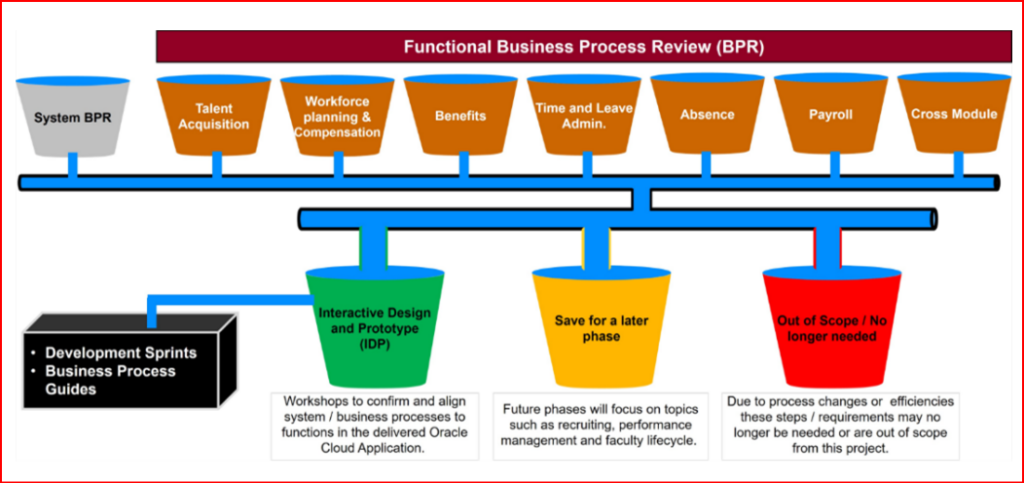Frequently Asked Questions
General Overview
-
This initiative will achieve excellence by delivering strategic, people-centric services and transforming the university’s human resources and payroll services, business processes, and systems.
-
Please email any questions about the project to transformhrp@rutgers.edu.
-
The project will be implemented in phases with functionality prioritized.
People
-
The Rutgers community will have access to a single, reliable source of information for human resources and payroll, enabling self-service functionality and support.
-
The CAN is a group of Change Agents who will advocate for the HR/Payroll Transformation Initiative, and the adoption of new processes and the HCM system within their own teams. The goal of the Change Agent Network is to advocate for the HRP Transformation, encourage users to embrace the change, reduce risk to the project, and to ultimately promote project success.
System
-
The following functions are included in Phase 1
- Core HCM
- Payroll
- Strategic Workforce Planning
- Benefits
- Compensation
- Absence management
- Time & Labor
-
Below is a depiction of how Phase 1 of the HR/Payroll Transformation Initiative has been structured to maximize the time and efforts of the team.

-
There are dedicated workstreams (e.g., data warehouse and reporting, conversion) that are identifying and documenting data requirements to ensure there are no gaps in historical data that needs to be available to support critical business processes.
-
Please check out the Current Phase page to find what is included in each phase.
Process
-
The HR/Payroll Transformation Initiative follows the UFA PMO Project Governance model. This model contains a well-defined structure to address and escalate decision-making, while project management processes and resources enable strong project governance and support an inclusive model for program execution.
-
A current state business process review assesses the current state of an organization’s processes, while a future state business process review outlines how the organization wants the processes to look in the future.
- Current-state review (“as-is” analysis) – examines the existing state of a process to identify issues, inefficiencies, and bottlenecks. The goal is to understand how the process works and identify opportunities for improvement.
- Future-state review (“to-be” analysis) – outlines the desired state of a process. The future state process should be more efficient, effective, and aligned with business objectives. It takes into consideration what’s possible with new technology, processes, or capabilities.
-
Position Management is the process, structure, and technology used to oversee and control an organization’s workforce in terms of the positions and roles employees hold in the organization. HCM full position management for all employees will be implemented in Phase 1.
-
As policies are introduced/updated, the new university review and approval process will be adhered to.